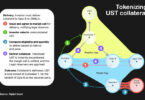Today enterprise blockchain firm Digital Asset announced that VMWare is investing in its Series C extension. The firm closed the main $35 million Series C at the end of last year, with Salesforce Ventures and Samsung Ventures joining an extension five months ago. Before the addition of the two tech companies, the total funding had reached $150 million.
Other investors include Accenture, ASX, Broadridge, Citi, Deutsche Börse, DTCC, JP Morgan, Goldman Sachs, IBM and others.
VMWare Blockchain’s General Manager and VP Brendon Howe will also join the board.
“Digital Asset’s partnership with VMware provides a truly enterprise grade blockchain offering that meets the requirements of even the most demanding use cases across a range of markets,” said Yuval Rooz, co-founder and CEO of Digital Asset. “Brendon brings tremendous technical leadership within networking, storage, and virtualization to Digital Asset’s board.”
The blockchain startup already has an important relationship with VMWare through DAML and the ASX CHESS project. In April last year, Digital Asset pivoted its business model to focus on smart contract language DAML to make it work across the major enterprise blockchains and databases. After DAML was open sourced, the integration with VMWare blockchain was the first announced. DAML now works with Hyperledger Fabric, Sawtooth, and Besu, R3’s Corda, Chinese blockchain FISCO BCOS, Amazon’s QLDB and Aurora databases, as well as DAML cloud service, project:DABL.
“Digital Asset’s simple and powerful business logic approach helps customers build distributed multi-party applications much faster,” said VMWare’s Howe.
Digital Asset is known for its involvement in the revamp of the Australian Securities Exchange (ASX) CHESS settlement system. In September last year, VMWare was added to the team, and the solution will use the VMWare Blockchain as the ledger with the DAML smart contract language. The ledger could be swapped out with little effort because the code is in the DAML smart contract layer.
The rationale behind the DAML pivot
When Ledger Insights spoke to CEO Yuval Rooz last year, he resisted the idea that it had sacrificed the Digital Asset ledger. He argued that the Digital Asset ledger is world class, but DAML offers a more significant business opportunity.
Rooz gave the Apple versus Google approach to smartphones as a metaphor. Apple’s iPhone is a fully integrated offering where everything from the design, chips, battery and operating system has to be better than everyone else. In contrast, Google might do everything extremely well but chose to make its operating system work with everyone. According to IDC, Android’s market share is currently around 86%.
Similarly, blockchains have several moving parts, with two critical elements being the ledger and the smart contract language. If DAML works across numerous ledgers, it hopes to gain massive market share.
Another aspect of the logic behind the DAML business model is that some enterprises may be on the fence when it comes to adopting distributed ledger technology (DLT). Or they don’t want to commit to one particular blockchain protocol. Hence by using DAML, they can add smart contract code on top of a database and move to a blockchain later or switch blockchain choices.






